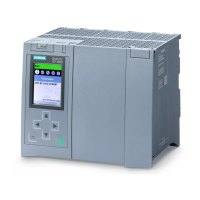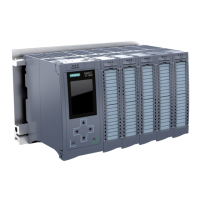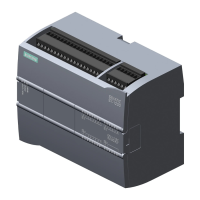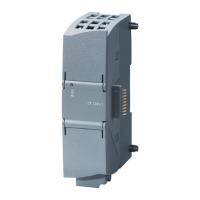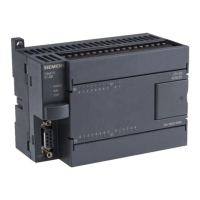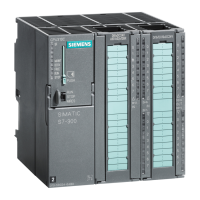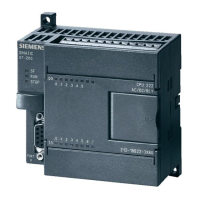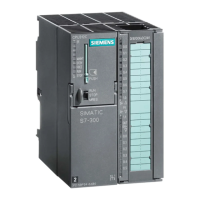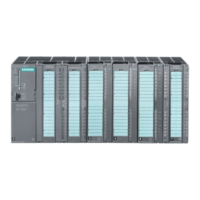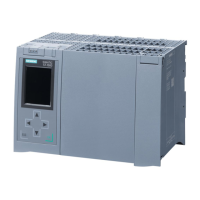
Do you have a question about the Siemens Simatic S7-1500R and is the answer not in the manual?
| Brand | Siemens |
|---|---|
| Model | Simatic S7-1500R |
| Category | Controller |
| Language | English |
Explains safety alert symbols and danger levels for user safety.
Defines personnel qualifications required for operating the product safely.
Outlines guidelines for safe and appropriate usage of Siemens products.
Describes the manual's role in supplementing system and function manuals.
Explains terminology and formatting used throughout the documentation.
Details Siemens' approach to industrial security and cyber threat prevention.
Introduces the platform for accessing product information and support resources.
Describes Siemens' online catalog and order system for automation solutions.
Covers system configuration, installation, wiring, and commissioning.
Provides module-specific details like properties and wiring diagrams.
Details general topics such as diagnostics and communication.
Refers to a compilation of documentation for the redundant system.
Offers an overview of instruction compatibility across controller families.
Introduces a personal workspace for managing support queries and documentation.
Offers tools and examples for solving automation tasks.
Overviews new firmware features and customer benefits.
Points to resources for new functions, improvements, and revisions.
Explains the system's setup and how it functions.
Details the components that make up the S7-1500R redundant system.
Describes how the primary and backup CPUs manage the process.
Details the physical characteristics and specifications of the CPU.
Presents an image showing the front of the CPU 1515R-2 PN.
Lists the specific technical attributes of the CPU 1515R-2 PN.
Describes the functionality and information provided by the CPU's display.
Details the voltage requirements and connection for the CPU.
Explains the two-port PROFINET interface and its functions.
Describes the single-port PROFINET interface.
Explains how CPUs function as IO controllers for various IO devices.
Explains the feature for forwarding synchronization data in PROFINET rings.
Directs users to information on related accessories and spare parts.
Lists and describes the CPU's firmware capabilities.
Explains the system's ability to maintain operation with two CPUs.
Describes automatic message generation for system diagnostics.
Highlights support for troubleshooting and program optimization via trace.
Explains PROFINET RT's role in prioritizing frames for determinism.
Details the protocol for configuring redundant networks.
Describes a PROFINET interface for energy saving by switching off consumers.
Introduces advanced technological functions.
Details security features for protecting the system.
Protects user blocks from unauthorized access and modifications.
Allows assigning rights to different user groups.
Identifies manipulations of engineering data on memory cards or during transfer.
Offers convenient password management for STEP 7.
Describes the physical interface elements of the CPU.
Shows the front panel with controls and display.
Explains the procedure for hot-swapping the front panel.
Describes how to secure the front panel against unauthorized access.
Shows the CPU's interface and connection elements when the front panel is removed.
Illustrates the connection elements on the rear of the CPU.
Explains the function and settings of the CPU's mode selector switch.
Provides information on connecting interfaces and block diagrams.
Details the pin assignment for the DC power supply connector.
Explains the interface configuration for PROFINET rings.
Describes the single-port PROFINET interface.
Explains how MAC addresses are assigned to PROFINET interfaces and ports.
Illustrates MAC address allocation for clarity.
Presents a schematic representation of the CPU's internal connections and functions.
Describes how LEDs indicate the CPU's operating and diagnostic status.
Shows the locations of the LEDs on the CPU 1515R-2 PN.
Illustrates how LED combinations reflect system and CPU states.
Details the significance of different LED patterns and colors.
Provides a comprehensive table of LED meanings and their corresponding states.
Explains the status indicated by the LINK RX/TX LEDs for PROFINET ports.
Covers basic product identification and firmware details.
Details the product's operational functions and features.
Specifies compatibility with programming software versions.
Lists technical specifications related to the CPU's screen.
Describes the physical input controls on the CPU.
Details electrical specifications for power supply.
Specifies the energy storage time for voltage failures.
Lists electrical input characteristics.
Indicates the typical power consumption.
Details memory capacity for program and data storage.
Specifies RAM capacity for program execution.
Details ROM/flash memory for storing programs and data.
Notes if the backup is maintenance-free.
Lists typical times for various operations.
Details the number and size of blocks (DB, FB, FC, OB).
Details specifications for Data Blocks.
Details specifications for Function Blocks.
Details specifications for Function Calls.
Details specifications for Organization Blocks.
Specifies the maximum depth for nested calls.
Lists details about distributed IO systems and controllers.
Covers clock type, backup time, and deviation.
Details support for clock synchronization methods.
Describes the CPU's interface capabilities.
Details the primary interface.
Lists supported interface technologies like Ethernet.
Enumerate supported communication protocols.
Specifies Ethernet port characteristics and capabilities.
Details the CPU's role as a PROFINET IO controller.
Lists supported communication services.
Specifies update times for real-time communication.
Details the secondary interface.
Refers to system manual for broader technical details.
Explains PROFINET Media Redundancy Protocol features.
Notes support for synchronized operations.
Details capabilities for system messaging and alarms.
Lists features for testing and commissioning.
Describes capabilities for monitoring and controlling variables.
Explains the function for forcing I/O values.
Details the CPU's diagnostic buffer capabilities.
Specifies configuration and memory for trace functions.
Covers diagnostic indicators and status information.
Details the specific diagnostic LEDs on the CPU.
Lists hardware-supported technology functions.
Mentions compliance with safety standards.
Details environmental operating requirements.
Specifies temperature ranges for normal operation.
Lists temperature limits for storage.
Notes installation altitude limits.
Covers programming languages and protection features.
Lists supported programming languages (LAD, FBD, STL, SCL).
Details user program and block protection features.
Describes password protection for the display and data.
Specifies settings for monitoring cycle times.
Lists the physical dimensions of the CPU.
Specifies the approximate weight of the CPU.
Provides visual representations of the CPU's dimensions.
Shows specific views and measurements of the module.
Provides visual representations of the CPU's dimensions.
Shows specific views and measurements of the module.
